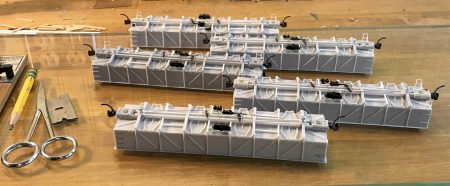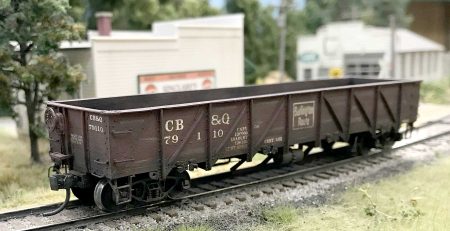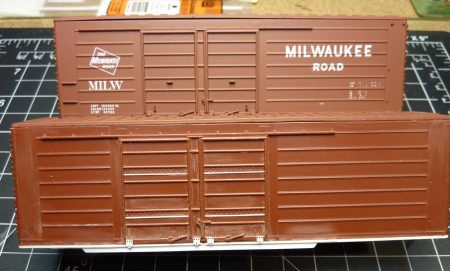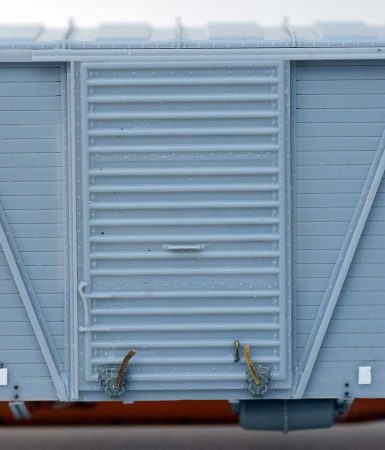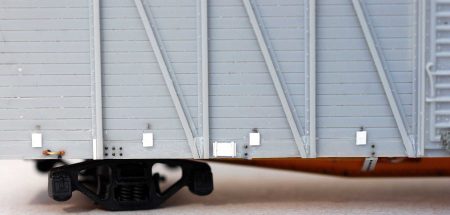CB&Q freight cars
Jerry Hamsmith sent an update on his growing CB&Q freight car fleet. Here’s his report.
I thought I might share some of what I have been working on in terms of rolling stock for my circa 1955 Chicago Burlington and Quincy – Beardstown Division layout. This division linked the southern Illinois coal fields with the major metropolitan areas in northern Illinois, Wisconsin and Minnesota, among others. In 1955, the Q coal hauling fleet, consisting of 2- and 3- bay hoppers and composite drop bottom gons, was still about 40 percent gons.
Here is another group of drop bottom gons I am currently working on. I do them in batches as I need a large number of them and that speeds up the process. Both steel end and wood end cars are in the current batch. I currently have a total of 33 finished composite gondola cars on the layout.
Here is a photo of one of the already completed cars on the layout. Jerry offers kits for these CB&Q coal gondolas. A PDF of currently available kits and decals can be found on the RCW blog Helpful Links page.
What’s on your workbench?

